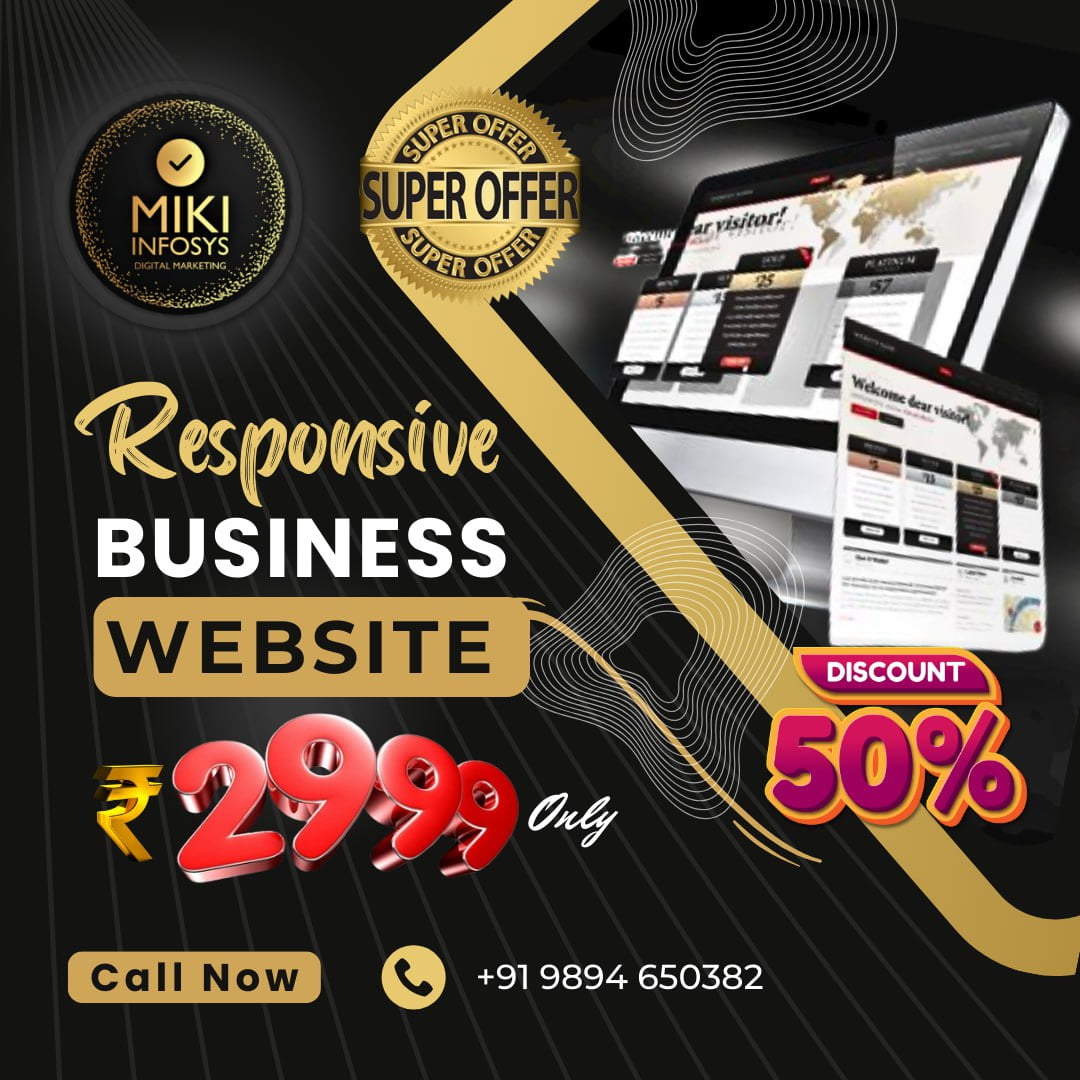Digital Marketing, Ecommerce Website, MiKi Infosys, Website Design
How to Effectively Use Your Website for Business
In today’s digital age, having a website is not just an option for businesses; it’s a necessity. Your website is often the first point of contact for potential customers and can be a powerful tool for establishing your brand, generating leads, and driving sales. At MiKi Infosys, we understand the importance of leveraging your website to its fullest potential. Here are some strategies to help you effectively use your website for business success.
1. Optimize for Search Engines (SEO)
Search Engine Optimization (SEO) is crucial for making your website visible to potential customers. By optimizing your website’s content and structure, you can improve its ranking on search engine results pages (SERPs). Here are some tips:
- Keyword Research: Identify relevant keywords that your target audience is likely to use when searching for your products or services.
- On-Page SEO: Use these keywords strategically in your titles, meta descriptions, headers, and content.
- Technical SEO: Ensure your website is mobile-friendly, has fast loading times, and uses secure HTTPS protocols.
- Quality Content: Regularly update your site with valuable content that addresses your audience’s needs and interests.
2. Create a User-Friendly Design
A well-designed website enhances user experience and encourages visitors to stay longer and engage with your content. Consider the following:
- Responsive Design: Ensure your website looks and functions well on all devices, including desktops, tablets, and smartphones.
- Easy Navigation: Organize your content logically and provide clear, intuitive navigation to help users find what they need quickly.
- Visual Appeal: Use high-quality images, videos, and graphics to create a visually appealing and professional-looking website.
- Consistent Branding: Maintain a consistent look and feel across your site to reinforce your brand identity.
3. Focus on Content Marketing
Content is king in the digital world. Providing valuable and relevant content can help attract and retain your target audience. Here’s how to do it:
- Blogging: Regularly publish blog posts on topics related to your industry. This can drive traffic, improve SEO, and position your business as an authority.
- E-books and Whitepapers: Offer downloadable resources that provide in-depth information and solutions to common problems faced by your audience.
- Video Content: Create engaging videos that showcase your products, share customer testimonials, or provide how-to guides.
- Email Newsletters: Keep your audience informed about your latest products, services, and updates through regular email communications.
4. Utilize Social Media Integration
Integrating your website with social media platforms can expand your reach and engage your audience in new ways. Here are some strategies:
- Social Sharing Buttons: Make it easy for visitors to share your content on their social media profiles.
- Social Media Feeds: Display your social media activity on your website to keep your audience updated and encourage them to follow you.
- Content Promotion: Share your website content on your social media channels to drive traffic back to your site.
5. Implement E-commerce Functionality
If you sell products or services online, having e-commerce functionality on your website is essential. Here’s what to consider:
- User-Friendly Shopping Cart: Ensure the checkout process is simple and straightforward to reduce cart abandonment rates.
- Secure Payment Gateway: Use a reliable and secure payment gateway to protect your customers’ financial information.
- Product Descriptions and Reviews: Provide detailed product descriptions and customer reviews to help visitors make informed purchasing decisions.
- Special Offers and Discounts: Use promotions, discounts, and special offers to entice visitors to make a purchase.
6. Leverage Analytics and Data
Monitoring your website’s performance is key to understanding what works and what doesn’t. Utilize analytics tools to gain insights into:
- Traffic Sources: Identify where your visitors are coming from (e.g., search engines, social media, referral sites).
- User Behavior: Understand how visitors interact with your site, including which pages they visit, how long they stay, and where they drop off.
- Conversion Rates: Track how many visitors take desired actions, such as making a purchase, filling out a contact form, or subscribing to a newsletter.
- A/B Testing: Experiment with different elements of your site (e.g., headlines, images, call-to-action buttons) to see what drives the best results.
7. Offer Excellent Customer Support
Providing excellent customer support through your website can enhance customer satisfaction and loyalty. Consider these options:
- Live Chat: Offer real-time assistance to visitors with a live chat feature.
- FAQ Section: Create a comprehensive FAQ section to address common questions and concerns.
- Contact Forms: Make it easy for visitors to get in touch with you through simple and accessible contact forms.
- Support Tickets: Implement a ticketing system to manage and resolve customer inquiries efficiently.
Conclusion
A well-designed, optimized, and content-rich website is a powerful tool for business growth. By following these strategies, you can create a website that not only attracts and engages visitors but also converts them into loyal customers. At MiKi Infosys, we specialize in helping businesses maximize their online potential. Contact us today to learn how we can support your digital journey.






